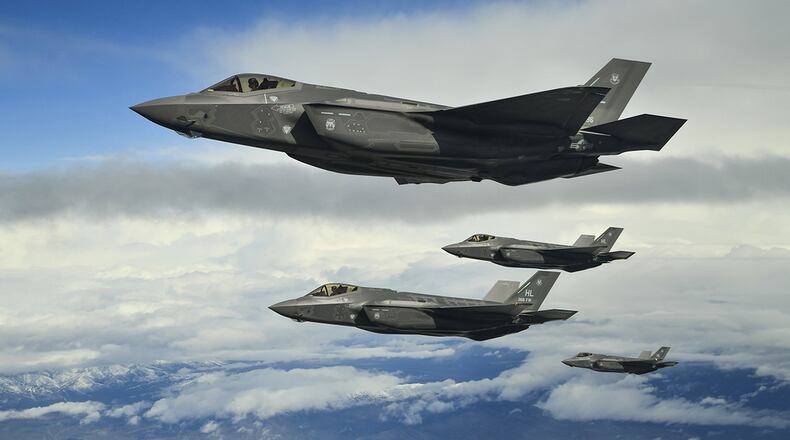One of the team’s most prominent accomplishments was its work in eliminating hazardous heavy metals traditionally employed in aircraft for protection against equipment wear and corrosion.
During the achievement period, the Environmental, Safety and Occupational Health Team tested and implemented a new zinc-nickel plating alternative that will completely remove cadmium plating from F-35 aircraft production and hexavalent chromium plating from all F-35 external coatings. The team is also on track to eliminate all remaining hexavalent chromium uses, such as fuel tank and support equipment primers and coatings.
“I couldn’t be more proud of this team’s innovative approaches to eliminating environmental, safety and occupational health hazards,” said Mark Correll, deputy assistant secretary of the Air Force for environment, safety and infrastructure. “Their accomplishments will have a positive and lasting impact on the safety of our Airmen, the community and the environment.”
Hazards are not limited to exposure to chemical compounds, the team was also recognized for its impressive acoustic data analysis that monitors community noise around installations to determine maintainer and cockpit pilot noise exposure levels. The analysis helped inform recommendations on hearing protection options for all current users of F-35 aircraft.
Other Environmental, Safety and Occupational Health Team actions included implementing the elimination of 21 tons of low volatile organic compound internal aircraft coating, as well as other regulated emissions, at a production facility in California.
Actions also included the implementation of a facility-wide lighting upgrade project at an F-35 assembly facility in Texas that resulted in brighter work lighting and significantly more efficient electricity use.
These efforts not only reduced environmental, safety and occupational health exposures, but also streamlined the production process, significantly reduced associated labor hours and optimized mission capabilities.
The Secretary of Defense Environmental Awards honor installations, teams and individuals for outstanding conservation achievements, innovative environmental practices and partnerships that improve quality of life and promote efficiencies that support, without compromising, the Defense Department’s mission success.
About the Author
